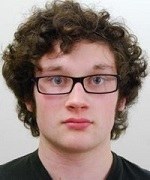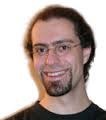Flexible, low cost, live cell imaging platform
Continued development of a flexible, low cost, live-imaging platform for long term monitoring of cell behaviour in vitro
The Idea
At present, long term in vitro imaging is costly, limited and closed. With this proposal, we seek funding to support the continued development of a flexible, low cost, live-imaging platform which was initially built to fully quantify the evolution of the cellular network structure and the establishment of the beating dynamics of human cardiomyocytes over extended periods of time, with the ultimate goal to better understand Hypertrophic Cardiomyopathy (HCM).
Background: HCM is the most common form of Mendelian-inherited heart disease, affecting approximately 0.2% of the global population and it is the most common cause of sudden cardiac death in individuals younger than 35 years of age. The advent of somatic cell reprogramming to generate human induced pluripotent stem cells (hiPSC) has provided a new model system for studying cellular function and signalling in tissues which would have otherwise required highly invasive procedures from patients. R. Shakur and J. Kadiwala (Sanger Institute) have developed an efficient cardiomyocyte differentiation protocol for hiPSC and are now able to differentiate these cells into spontaneously beating ventricular myocytes that spatially self-organise into an intricate network. Despite this, the role of mechanical transduction and cell migration in the generation of mature electrically stable cardiomyocytes during the differentiation of such cells into beating networks remains unknown, due in most part to the lack of a flexible and affordable commercial imaging solution.
Objectives: The current imaging device comprises an array of lenses/CCD sensors able to monitor up to six wells in a standard plate, is compact (250x200x150mm) enough to fit in an incubator, and requires no additional manual intervention across the monitoring period after setup. With respect to our primary objective, it is anticipated that the present imaging platform will allow us to record the evolution of morphological and dynamic characteristics and analyse them in the light of environmental conditions and cellular states in this model tissue. The work will help optimise the generation of such tissue culture work at high throughput, with direct clinical application for the development of future therapeutics. However, the platform itself should be of wide interest for any application that requires the long term monitoring of cell behaviour in vitro, a technique previously unavailable to the vast majority of synthetic biology labs. The project will in particular address current limitations of this setup and make it much more versatile by including different types of imaging and provide a flexible user interface.
The Team
Fergus Riche
Sensor CDT student, Department of Chemical Engineering and Biotechnology
Junead Kadiwala
Stem Cell Research Scientist, Department of Surgery
Rameen Shakur
Cardiologist, Laboratory for Regenerative Medicine, Department of Surgery, Clinical researcher, Wellcome Trust Sanger Institute
Alexandre Kabla
University Senior Lecturer, Department of Engineering, Emmanuel College






